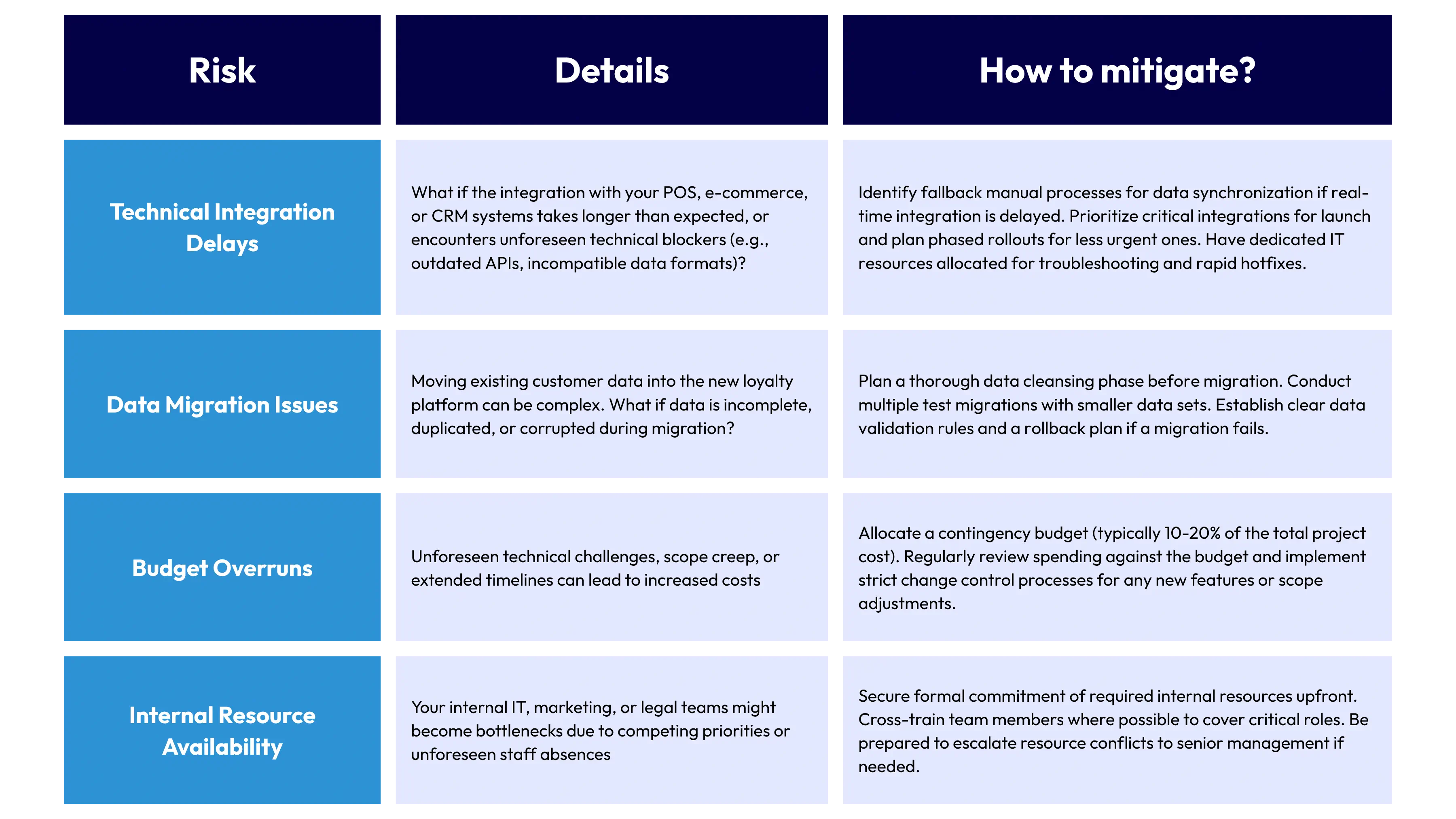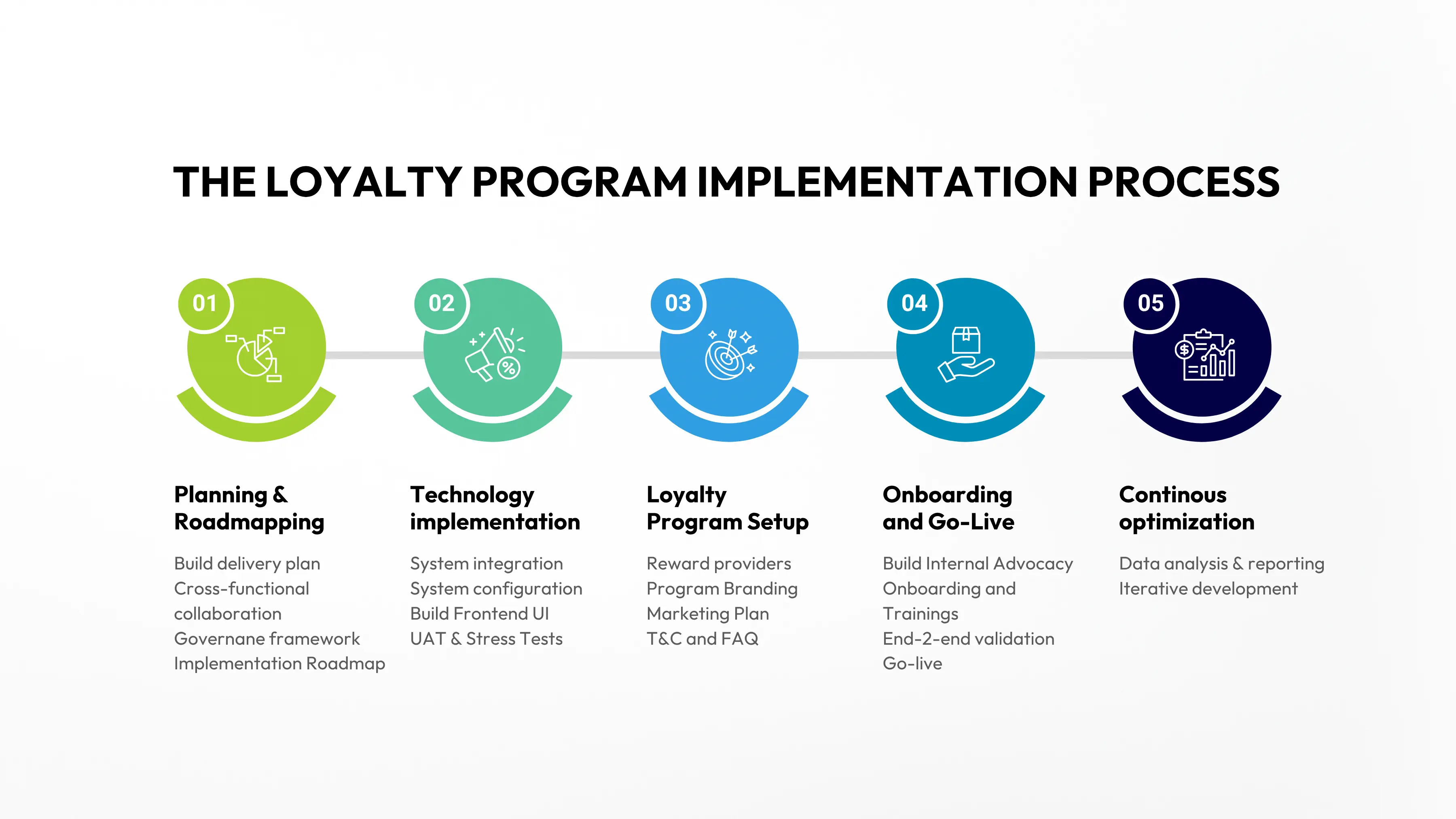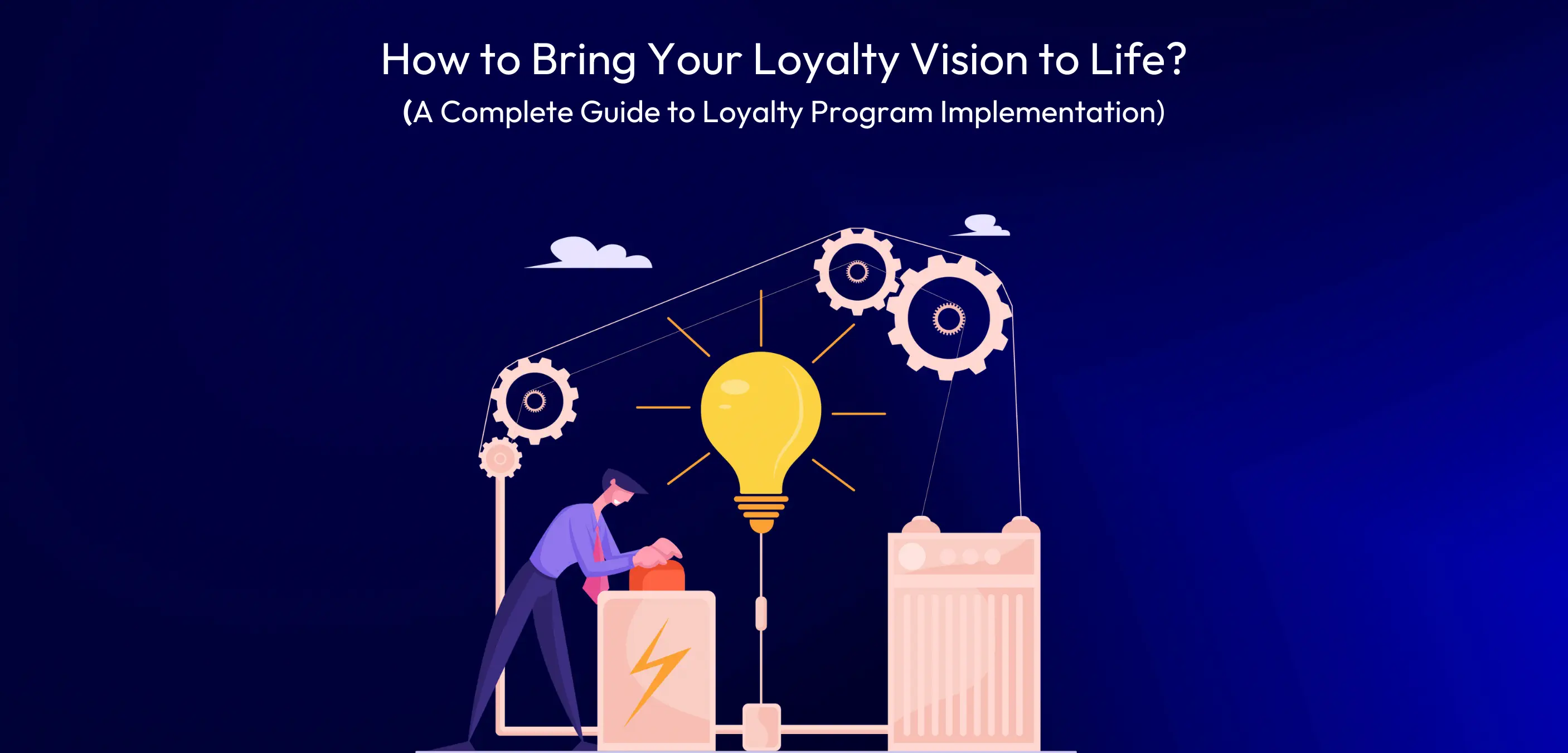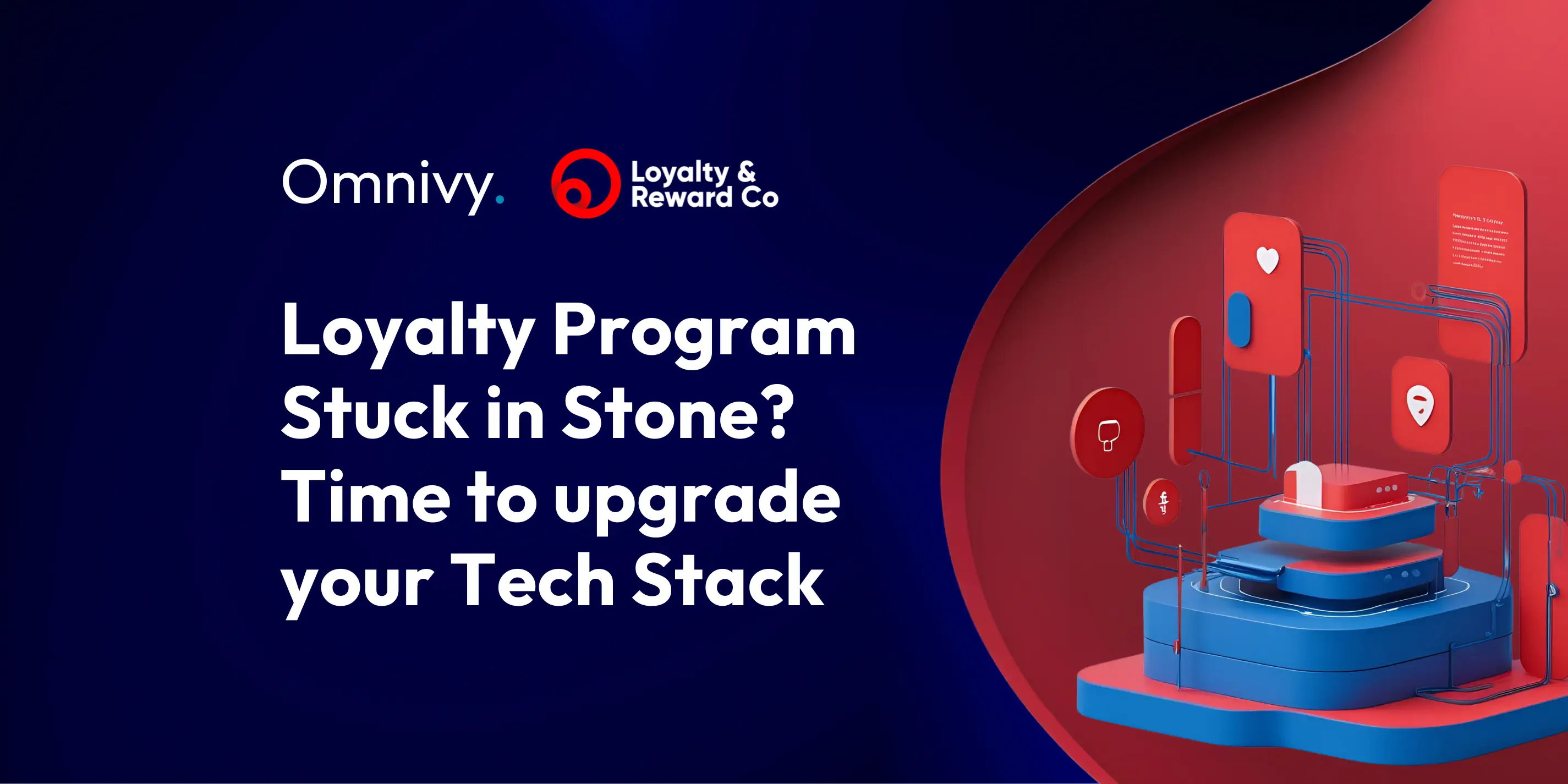You’ve carefully shaped your loyalty program strategy, chosen effective mechanics, and designed a clear technical architecture. These initial steps set a strong foundation, but now comes the moment to turn that vision into a working reality: loyalty program implementation.
This phase requires a good understanding of the business and tech work that needs to be delivered, a solid understanding of technological possibilities, and seamless execution to ensure your program not only launches on time but also thrives and brings all the positive results you expect from it.
Let’s deep dive into the proven loyalty system implementation methodology that we’ve been fine-tuning for the last 10 years, implementing loyalty programs for the large global brands (like BP, Auchan or Costa Coffee), but also fast-growing challengers that wanted to differentiate through their unique loyalty program (like Shaping New Tomorrow).
Loyalty Program Implementation Starts With Smart Technology Choices
Selecting the right loyalty technology is a crucial decision, far beyond simply checking off features. It’s about securing a solution that truly aligns with your long-term business goals and can evolve as your customer relationships deepen.
- Aligns with Your Strategy: The technology you pick must genuinely support your defined loyalty strategy. Can it easily set up the points, tiers, rewards, and specific mechanics you’ve imagined? Ensure it can accommodate the nuances of your loyalty model, whether it’s a simple points collection or more complex gamification and referral systems. Look into the vendor's commitment to continuous development, regular updates, and responsive technical support. A strong partnership with your technology provider ensures your loyalty platform stays current and any issues are quickly resolved.
- Scalable and Adaptable: Your loyalty program will grow. The chosen technology needs to scale effortlessly to handle more members and their activities. Just as important is its flexibility to adapt to future program enhancements, new features, or changes in customer behavior, without requiring a complete rebuild.
- Integration Capabilities: A loyalty program never stands alone. Seamless integration with your existing technology ecosystem is vital. This includes your CRM, e-commerce platform, point-of-sale (POS) systems, marketing automation tools, and analytics platforms. Smooth data flow across these systems is essential for personalizing experiences and running operations efficiently. Make sure the loyalty platform offers a complete set of APIs needed to communicate with those 3rd party systems in real time.
- User-Friendly for Your Team: While often overlooked, how easy the platform is for your internal teams to use matters immensely. An intuitive interface empowers your marketing, customer service, and IT teams to manage campaigns, monitor performance, and solve issues effectively, cutting down on the need for extensive training or external help.
- Strong Data Security and Compliance: Customer data is a valuable asset. Verify that the technology meets the highest data security standards and complies with relevant privacy regulations, such as GDPR. Protecting sensitive information is non-negotiable for keeping customer trust.

Loyalty Program Implementation Process: From Planning to Go-Live
As the person leading your loyalty program implementation, you're about to embark on a multi-faceted journey. Implementing a loyalty program calls for careful planning, precise coordination across various internal departments, and testing. Here's a breakdown of the key phases and tasks you'll need to manage:
1. Planning and Scope Definition
This initial phase sets the groundwork for the entire implementation, ensuring clarity and agreement among everyone involved. This is where you, as the project owner, establish the path to success.
Craft Your Delivery Plan: You’ll need to create a clear roadmap outlining all tasks, responsibilities, and key performance indicators (KPIs) for a successful project delivery. This also includes metrics for evaluating the loyalty system’s performance and the program's overall success.
Champion Cross-Functional Collaboration: A smooth loyalty program implementation depends on effective teamwork. You’ll need to foster strong collaboration across all relevant departments - marketing, IT, customer service, operations, legal - to prevent bottlenecks and ensure information flows freely.
- Appoint Champions: Ask each key department (Marketing, IT, Legal, Customer Service, Operations) to nominate a dedicated liaison. This person will be their primary point of contact for the loyalty project, responsible for channeling information, decisions, and feedback both to and from their team. This centralizes communication and avoids missed messages.
- Create a Shared Communication Hub: Establish a single, easily accessible platform for all project-related communication and documentation. This could be a dedicated channel in Microsoft Teams, Slack, a project management tool like Asana or Jira, or a shared drive. The goal is to ensure everyone can find the latest updates, decisions, and documents without hassle.
- Foster a "No Silos" Mindset: Actively encourage direct communication and problem-solving between departments rather than relying solely on you as the central hub. Facilitate informal discussions and workshops where teams can brainstorm solutions together. Emphasize that the loyalty program's success is a shared goal.
- Translate Jargon: As the project owner, you'll often need to act as a translator between technical teams (IT, developers) and business-focused teams (Marketing, Customer Service). Ensure that technical requirements are explained in business terms, and business needs are clearly articulated for IT, minimizing misunderstandings.
Establish a Governance Framework: To maintain control and accountability throughout the project and beyond, you should set up a clear governance structure. This isn't just about rules; it's about defining how decisions are made, who is responsible for what, and how progress is tracked and communicated. For your loyalty program, this means:
- Defining Decision-Making Paths: Who has the final say on budget changes, feature scope adjustments, or critical integration choices? Establish a clear hierarchy and process for major decisions to avoid delays. For example, setting up a "Loyalty Steering Committee" comprising heads of Marketing, IT, and Finance for strategic approvals, while day-to-day operational decisions are delegated to the project team.
- Assigning Roles and Responsibilities (RACI Matrix): Go beyond just listing tasks. Clearly define who is Responsible (does the work), Accountable (owns the outcome), Consulted (provides input), and Informed (needs to know) for every key aspect of the loyalty program, from data security to campaign execution. This ensures no task falls through the cracks and everyone knows their part.
- Setting Up Regular Review Cadences: Decide how often and in what format progress will be reviewed. This could be weekly project stand-ups for the core team, bi-weekly progress meetings with department leads, and monthly executive briefings. Each meeting type should have clear objectives and required attendees.
Develop a Comprehensive Implementation Roadmap: This detailed roadmap will map out all tasks, timelines, and responsibilities for each phase of the loyalty program implementation, serving as your project’s blueprint.
- Prioritize Initiatives: With many potential features and functionalities, you’ll need to prioritize based on their potential impact and feasibility. This ensures that high-value features are implemented in the early stages.
- Prepare for Contingencies: Proactive risk management is crucial. Develop contingency plans to mitigate potential risks and challenges that might come up during implementation, preparing for the unexpected.
- Engage Key Stakeholders: Identify critical stakeholders from each department and build a cross-functional team collectively responsible for the loyalty program’s success. Clearly defining roles and responsibilities for all team members involved will be essential.
- Set Up Clear Communication Protocols: Regular meetings must be scheduled to discuss progress, address challenges, and share insights, fostering continuous and open communication.
- Outline Decision-Making Processes: Establish clear processes for making decisions, resolving issues, and monitoring ongoing performance to keep the project on track.

Key Deliverables for You: A comprehensive implementation plan that includes a detailed timeline with milestones, a prioritized list of initiatives, a thorough risk assessment and mitigation strategies, a stakeholder engagement plan, and a structured schedule for ongoing communication.
2. Loyalty System Integration
This is an extremely important part of the loyalty program implementation, that’s why it’s described in detail in the next part of this Series.
3. Loyalty Engine Setup – The Core of Loyalty System Implementation
This is the phase where your strategic vision transforms into a working, configured loyalty solution. You’ll be overseeing the core technical setup and configuration of your chosen platforms.
- Initial System Setup: You’ll need to ensure the careful configuration of the Loyalty System’s account settings, including API keys, user roles, and permissions, making sure all necessary access is granted. This includes preparing the project plan and detailed system configuration for your loyalty engine and related marketing automation tools.
- Campaign and Rule Creation: Oversee the setup of initial loyalty campaigns, promotions, vouchers, and coupon codes. This involves aligning them precisely with your business goals and defining the exact rules for how loyalty points are earned and redeemed.
- Reward Structures and Redemption Rules: You’ll be responsible for making sure various reward types (e.g., discounts, free products, exclusive access) are configured correctly, along with their tiered structures and any usage restrictions. Defining the rules for point redemption, including minimum points required, expiry dates, and product/service restrictions, is also crucial.
- Tier Management: If your program includes different customer tiers (e.g., Bronze, Silver, Gold), you’ll need to ensure these are set up based on predefined criteria, with associated benefits and clear processes for upgrades or downgrades.
- Laying Groundwork for Analytics: Prepare for the future development of custom analytics and reporting tools to monitor program performance. This means understanding what dashboards will be needed for key metrics like point accrual and redemption rates.
- Marketing Automation Integration & Setup: This often involves ensuring basic communication flows and segmentations are correctly set up within your chosen marketing automation platform to support your loyalty program's outreach.
Key Deliverables for You: A fully configured Loyalty Engine instance and the selected Marketing Automation system, complete with defined rules, campaigns, rewards, and the framework for communication campaigns (your team will typically provide copy and graphical elements).

4. Establish Relationships with Reward Providers and Partners
Your loyalty program often extends beyond just points and discounts. If you plan to offer diverse rewards like gift cards from other brands, exclusive experiences, or charity donations, you'll need to secure those partnerships.
- Identify Potential Partners: Research and identify potential reward providers and partners whose offerings align with your brand values and customer preferences. Consider gift card providers, experience platforms, or even complementary businesses.
- Negotiate Agreements: Engage in negotiations to establish favorable terms, pricing, and integration capabilities with these third-party reward providers. This includes understanding their technical APIs, inventory management, and fulfillment processes.
- Integrate Fulfillment Processes: Work with your IT and operations teams to integrate the fulfillment of these third-party rewards into your loyalty platform and customer service workflows. This might involve API connections for instant digital rewards or manual processes for physical goods.
- Set Up Operational Guidelines: Define clear operational guidelines for your customer service team on how to handle inquiries, redemptions, and potential issues related to external rewards.
Key Deliverables for You: A portfolio of secured reward partnerships, established integration points for reward fulfillment, and clear operational procedures for managing external rewards.
5. Build the UI for Loyalty Program Frontends
The user interface (UI) is the face of your loyalty program for your customers. It's how they'll engage, track progress, and redeem rewards. This involves creating the necessary screens and functionalities on your website, app, or in-store kiosks.
- Design User Flows: Collaborate with your UX/UI designers to map out the complete user journey within the loyalty program frontend. This includes sign-up, points tracking, reward Browse, redemption processes, and profile management.
- Develop Frontend Pages: Work with your development team to build dedicated loyalty pages or sections on your website (e.g., a "My Rewards" dashboard, program FAQs, T&Cs page). This might also extend to updates within your mobile app or POS interface.
- Integrate with Loyalty Engine APIs: Ensure these frontends are correctly integrated with your chosen loyalty engine's APIs to display real-time points balances, available rewards, tier status, and enable redemption functionalities.
- Ensure Mobile Responsiveness: Guarantee that all loyalty program frontends are fully responsive and provide an optimal experience across various devices, from desktops to smartphones.
- Implement Calls-to-Action (CTAs): Strategically place clear and compelling calls-to-action across your existing customer touchpoints (e.g., homepage banners, checkout pages, account dashboards) to encourage enrollment and engagement.
Key Deliverables for You: Designed and developed loyalty program UIs on your website and other customer-facing platforms, integrated with your loyalty engine for real-time data, and ready for user interaction.
6. Supporting Loyalty Program Implementation With Strong Marketing Plan
Your loyalty program isn't just a set of rules; it's an extension of your brand designed to engage customers. This phase focuses on crafting its unique identity and planning how you'll introduce it to the world, keeping customers excited and engaged from day one.

Define Program Branding: Give your loyalty program its own personality that resonates with your core brand but feels special.
- Choose an Engaging Name: Move beyond generic "Rewards Program" to something memorable like "Insider Circle" or "First Access Club" that aligns with your brand's tone and creates a sense of belonging.
- Develop a Visual Identity: Create a simple, recognizable logo or badge specifically for the loyalty program. Ensure it uses your brand's colors, fonts, and overall style so it feels integrated, not disconnected.
- Establish a Consistent Tone of Voice: Determine how your program will "speak." If your brand is playful, the program should be too. If it's luxurious, the language should reflect that. Consistency builds trust and makes the program feel authentic.
- Weave it into Your Brand Experience: Naturally integrate the program's branding across all customer touchpoints – website homepage, checkout, emails, even physical receipts. Make it a visible, valued part of the customer journey.
Craft a Core Messaging Framework: Develop clear, customer-centric messages that tell customers precisely: what the program is, what benefits they gain, and how effortlessly they can participate.
- Core Headlines & Benefits: Create short, impactful phrases that highlight the main value proposition (e.g., "Shop, earn, and unlock exclusive rewards!" or "Earn points with every purchase, redeem for discounts and special experiences.").
- Simple Call-to-Actions (CTAs): Use direct, action-oriented language (e.g., "Join now," "Check your points," "Redeem your reward today").
Develop Your Communication Channels Plan: Outline where and how you will communicate about the program to maximize reach and engagement.
- Website & App Integration: Ensure loyalty status, points balance, and redemption options are prominently displayed on your website and within any mobile apps.
- Email Marketing Strategy: Plan a comprehensive email journey, starting with a powerful launch announcement, followed by a welcome series for new members (guiding them on earning/redeeming), personalized reward notifications, and ongoing engagement updates (e.g., new rewards, tier changes, anniversaries).
- Social Media Engagement: Leverage social platforms for announcements, regular reminders about perks, showcasing redeemed rewards, featuring user-generated content, and creating exclusive loyalty-only moments (e.g., bonus point days, member giveaways).
- In-Store & External Channels: Consider in-store signage, QR codes for sign-up, or even external ads and partnerships to spread awareness.
Plan Your Launch Promotions & Automated Messages: Drive early adoption and sustain excitement with targeted offers and continuous communication.
- Welcome Bonuses: Offer an immediate reward for signing up (e.g., "Join today and get 100 bonus points!").
- Limited-Time Promotions: Create urgency around the launch with special offers (e.g., "Double points on all purchases this weekend only!").
- Automated Engagement Flows: Beyond initial welcome emails, set up automated messages for key loyalty events:
- Points Earned Confirmation: "You've earned X points from your recent purchase!"
- Reward Unlocked Notifications: "Great news! You've unlocked a new reward!"
- Points Expiration Reminders: "Heads up! Some of your points are expiring soon."
- Tier Progression/Renewal Alerts: "Congratulations! You've reached Gold status!"
- Account Actions: Confirmations for profile updates, password resets, or account deletions.
Personalization: Where possible, integrate personal data (name, points balance, progress to next reward) into automated messages to make them feel relevant and engaging.
Key Deliverables for You: A defined loyalty program brand identity, a comprehensive messaging framework, detailed cross-channel marketing plan (including email, social, and promotional strategies), and a set of automated communication flows for key customer interactions.
7. Prepare the T&C and FAQ of the program
Beyond marketing, the integrity and trust of your loyalty program hinge on clear, legally sound documentation and easy access to essential information for customers. This phase is about safeguarding your business and setting transparent expectations. It has to be prepared by the legal team, so as Project Owner please make sure you secure the time of your legal department or budget for 3rd party Legal Practice to support you with it.
Develop Comprehensive Terms & Conditions (T&Cs): This critical document defines the contractual basis of your loyalty program. Collaborate closely with your legal team to ensure it's robust, compliant, and clearly articulates:
- Program Mechanics: How points are earned, accrued, and redeemed, including any specific mechanics or gamification rules.
- Eligibility & Participation: Who can join, any age or geographic restrictions, and requirements for account creation.
- Reward Structures: Details on available reward types, tier benefits, and any limitations or exclusions.
- Point & Reward Expiration: Clear rules regarding the validity period of points and rewards, and policies for inactive accounts.
- Policy on Abuse & Fraud: Explicit guidelines and consequences for fraudulent activity or misuse of the program.
- Privacy & Data Handling: A transparent outline of how customer data will be collected, used, stored, and protected, ensuring compliance with relevant data protection regulations (e.g., GDPR, CCPA).
- Program Changes & Termination: Your right to modify, suspend, or terminate the program, with provisions for fair notice and handling of existing member benefits.
- Legal Review & Approval: Critical step to ensure full legal compliance before launch.
Create a User-Friendly FAQ Section: Anticipate common customer questions and provide clear, concise answers to reduce customer service inquiries and improve member experience. This section should be:
- Comprehensive: Covering topics from basic enrollment ("How do I join?") and earning ("How do I earn points?") to more complex scenarios ("What happens if I return an item?", "Can I combine points from different accounts?").
- Actionable: Providing straightforward, step-by-step instructions for processes like checking balances or redeeming rewards.
- Tier-Specific (if applicable): Explaining how tiers work, how to advance, and the benefits associated with each level.
- Accessible: Easily findable on your loyalty landing page, within your mobile app, and linked from key communications.
- Dynamic: Establish a process for regularly updating the FAQ based on customer feedback and new program features or policies.
Key Deliverables for You: Fully drafted, legally reviewed, and approved Terms & Conditions for the loyalty program, and a comprehensive, user-friendly FAQ section that addresses anticipated customer queries.
8. Cultivate Organizational Readiness & Internal Advocacy
A powerful loyalty system is only as effective as the entire organization supporting it. Your goal in this phase extends beyond mere technical training; it's about embedding the loyalty program into the fabric of your company culture and operations, ensuring every department understands its role in driving success.
Develop a Holistic Internal Onboarding & Training Strategy
Tailored Training Programs: Design and deliver specific training modules for various departmental roles.
- Loyalty Program Team/Marketing: In-depth training on the loyalty engine for campaign management, rule configuration, data segmentation, and performance monitoring. This will include sessions led by solution vendors' Success Managers.
- Customer Support: Comprehensive training on loyalty program rules, common customer inquiries, how to check member status/points, handle redemption issues, and escalate complex cases effectively.
- In-Store Employees (POS Operators, Sales Associates): Practical training on how the loyalty program functions at the point of sale (e.g., how to enroll new members, apply loyalty discounts, guide customers on earning/redeeming points). Emphasize their crucial role as the front line of the program. Think about how to turn your front-line employees into program’s ambassadors.
- Operations & Logistics: Training on fulfillment processes for rewards (especially third-party ones), inventory management implications, and coordinating with customer service.
- IT Department: Training on system maintenance, monitoring integrations, troubleshooting, and understanding potential API issues.
Accessible Training Resources: Provide a centralized hub for all training materials, including:
- User manuals and quick reference guides.
- Video tutorials for common tasks and scenarios.
- Internal FAQs and troubleshooting guides.
- Contact points for ongoing support.
"Train the Trainer" Programs: For larger organizations, consider empowering key individuals within each department to become internal loyalty program champions and trainers.
Foster Internal Excitement & Advocacy: Loyalty should become a core organizational priority, not just a marketing initiative.
- Internal Communication Plan: Develop a strategy to regularly communicate program benefits and progress to all employees. Use internal newsletters, town halls, or dedicated communication platforms.
- Highlight Organizational Benefits: Clearly articulate what the loyalty program means for the company's overall strategy, customer retention, sales growth, and data insights.
- Celebrate Internal Milestones: Recognize and reward teams or individuals who excel in supporting the loyalty program or drive significant member engagement.
- Pilot Programs & Feedback Loops: Consider running internal pilot programs with employees to gather feedback, iron out kinks, and build enthusiasm before a full public launch.
- Dedicated Internal Champions: Beyond formal liaisons, identify and empower passionate employees from different departments to become informal ambassadors for the loyalty program.
Key Deliverables for You: A fully equipped and confident internal team across all relevant departments (Marketing, Customer Support, In-Store, Operations, IT), comprehensive and tailored training programs, accessible internal support resources, and a demonstrable culture of internal advocacy and excitement around the loyalty program.
9. User Acceptance Testing – Final Validation in Loyalty Program Implementation
This is the decisive phase where all the carefully planned and integrated components of your loyalty program come together for a rigorous, real-world stress test. Your role as Project Owner is critical in orchestrating this comprehensive validation to ensure flawless functionality across the entire ecosystem before launch.
Strategize the Comprehensive UAT Plan:
Define Cross-System Test Scenarios: Go beyond isolated testing. Develop detailed test cases that simulate actual customer journeys and internal workflows across all integrated systems. This includes scenarios like:
- Customer signs up on e-commerce frontend -> data flows to loyalty engine -> welcome email is sent via marketing automation.
- Customer makes a purchase at POS -> points are calculated by loyalty engine -> points balance updates on customer's web profile.
- Customer redeems a reward via mobile app -> loyalty engine deducts points -> discount is applied in POS/e-commerce.
- Customer service agent manually adjusts points -> changes reflect across all customer-facing UIs.
Involve All Relevant Stakeholders: Engage representatives from every department that interacts with the loyalty program – Marketing, Customer Support, IT, Operations, Sales (in-store). Their direct involvement ensures that the system meets their operational needs and that they are comfortable with the new workflows.
Simulate High-Volume Scenarios: Include tests for peak transaction periods or large-scale promotional redemptions to verify system performance and stability under pressure.
Oversee Test Execution and Data Integrity:
- Manage Test Cycles: Coordinate multiple rounds of testing, allowing for bug fixing and re-testing. This iterative approach is crucial for identifying and rectifying issues systematically.
- Monitor Data Flow & Synchronization: Pay close attention to data consistency across all integrated platforms. Ensure points balances, customer profiles, and transaction histories are accurately reflected everywhere.
- Document and Track Issues Rigorously: Implement a robust system for logging, prioritizing, and tracking every bug or inconsistency found during UAT. Assign clear ownership for resolution and monitor progress closely.
Drive Issue Resolution and Refinement:
- Facilitate Cross-Functional Troubleshooting: When issues arise, act as the central coordinator to bring together the necessary IT, vendor, and business teams to diagnose and resolve problems efficiently.
- Ensure Timely Fixes: Prioritize critical bugs that block the program's core functionality or impact customer experience, ensuring they are addressed swiftly.
- Validate Fixes Through Re-Testing: No fix is complete until it has been thoroughly re-tested to confirm the issue is resolved and no new problems have been introduced.
Formalize Readiness for Launch:
- Obtain Stakeholder Sign-Off: Secure formal approval from all key departmental stakeholders (e.g., Head of Marketing, Head of IT, Head of Customer Service) indicating their satisfaction with the system's performance and readiness for deployment. This sign-off is a critical gatekeeping step before Go-Live.
Key Deliverables for You: A comprehensive UAT plan encompassing all integrated systems, detailed documentation of test results and resolved issues, clear processes for cross-functional issue resolution, and a formal, signed-off confirmation from all key stakeholders affirming the end-to-end system's readiness for public launch.
10. Go-Live: Orchestrating a Smooth Loyalty System Implementation Launch
The launch of your loyalty program is not just a technical deployment; it's a critical moment for customer perception and internal confidence. Your role here is to act as the central commander, ensuring a smooth transition and proactive support structure for immediate issue resolution.
Develop a Detailed Go-Live Playbook:
- Pre-Launch Checklist: Create an exhaustive checklist of all final technical configurations, content uploads, communication scheduling, and team readiness checks. This ensures nothing is overlooked in the final hours.
- Phased Rollout Strategy (Optional but Recommended): For large or complex programs, consider a phased launch (e.g., to a small segment of customers, or to a specific region/store type first) to identify and resolve issues in a controlled environment before a full rollout.
- Defined Roles & Responsibilities for Launch Day: Clearly assign specific tasks and owners for the actual moment of launch and the immediate post-launch period. Who pushes the buttons? Who monitors? Who communicates?
Establish a Robust Support & Monitoring Command Center:
- Dedicated Go-Live Support Team: Assemble a core team from IT, loyalty program management, and customer support with defined roles for the launch period. This team should be immediately available to address any issues.
Real-time Performance Monitoring: Set up comprehensive dashboards to track critical metrics in real-time, including:
- System uptime and response times across all integrated platforms.
- New member sign-ups and enrollment rates.
- Point accrual and redemption rates.
- Transaction data flow between POS/e-commerce and the loyalty engine.
- Marketing automation email send/open/click rates for loyalty communications.
- Customer service inquiry volume related to the loyalty program. Immediate Issue Escalation Protocol: Define clear pathways for identifying, escalating, and resolving issues with extreme urgency. This includes direct lines of communication with vendor support teams and your integration partner. Communication Flow for Incidents: Establish how internal teams (and potentially external customers) will be informed of any widespread issues and their resolution status.
Ensure Post-Launch Operational Stability:
- Transition to Ongoing Support: Define the process for transitioning from launch-specific support to the standard ongoing support model.
- Post-Launch Review & Lessons Learned: Conduct a thorough review meeting shortly after go-live (e.g., 1 week, 1 month) with all stakeholders. Discuss successes, identify challenges, gather lessons learned, and formulate action plans for continuous improvement and optimization. This feedback loop is crucial for future enhancements.
Key Deliverables for You: A comprehensive Go-Live plan and playbook, a dedicated launch support team with clear roles, real-time monitoring dashboards, a rapid issue escalation and resolution process, a successful program launch with minimal disruption, and a formal post-launch review providing insights for future optimization.
Post-Implementation: Sustaining and Optimizing Your Loyalty Program
Launching your loyalty program is a major achievement, but its true long-term success depends on continuous monitoring, agile optimization, and strategic adaptation. You'll need to keep a close eye on performance and be ready to evolve.
- Data Analysis and Reporting: Establish processes for ongoing insights through key metric monitoring, customer behavior analysis, and performance reporting to inform strategic decisions.
- Iterative Development: Plan for introducing new functionalities, testing novel mechanics, and continuously optimizing existing features based on data-driven insights.
- Ongoing Technical Support: Ensure continuous technical support and efficient issue resolution, often including ongoing monthly maintenance for integrated systems, to keep your program running smoothly.
Summary
Successfully launching a loyalty initiative requires far more than just plugging in a tool. Loyalty program implementation is a strategic transformation process — one that touches marketing, IT, customer experience, operations, and analytics.
Bringing a loyalty program to life is a massive undertaking, we know that. As the project owner, you're juggling a huge list of tasks, from grand strategy to tiny technical details, all while keeping your teams aligned.
Luckily, this step-by-step approach you've just read isn't just theory on paper. It's a battle-tested methodology we've refined over a decade, helping major global brands launch their loyalty programs with confidence. Stick to this proven path, and you won't just launch a program; you'll embed a powerful, profit-driving asset right into the heart of your business. And when that happens? You become the undeniable star of your organization, the one who transformed a vision into a thriving reality.
Now, if the thought of tackling all these moving parts still feels overwhelming, or you're simply eager to hit the ground running much faster, that's precisely where a partner like Omnivy steps in. We know from our report (you can find our report) that these complex, multi-country loyalty projects often drag on for 6 -12 months. But with our specialized blueprints, the proven methodology we just walked through, and our unique Integration Accelerator, we can cut that timeline dramatically. We're talking about bringing loyalty programs to life in just 1-3 months, depending on your existing tech and how clear your loyalty vision already is. We not only bring deep knowledge of leading loyalty technologies but also a proven approach for integrating them with your existing ecosystem. This includes crucial connections to POS systems and e-commerce platforms.
At Omnivy, we specialize in simplifying even the most complex loyalty system implementation projects. From initial planning to seamless integration and go-live support, we help brands deliver fast, flexible, and scalable loyalty programs. We can either provide expert guidance to your team, or roll up our sleeves and take full ownership of the project, managing every detail and coordinating all the work for you.




